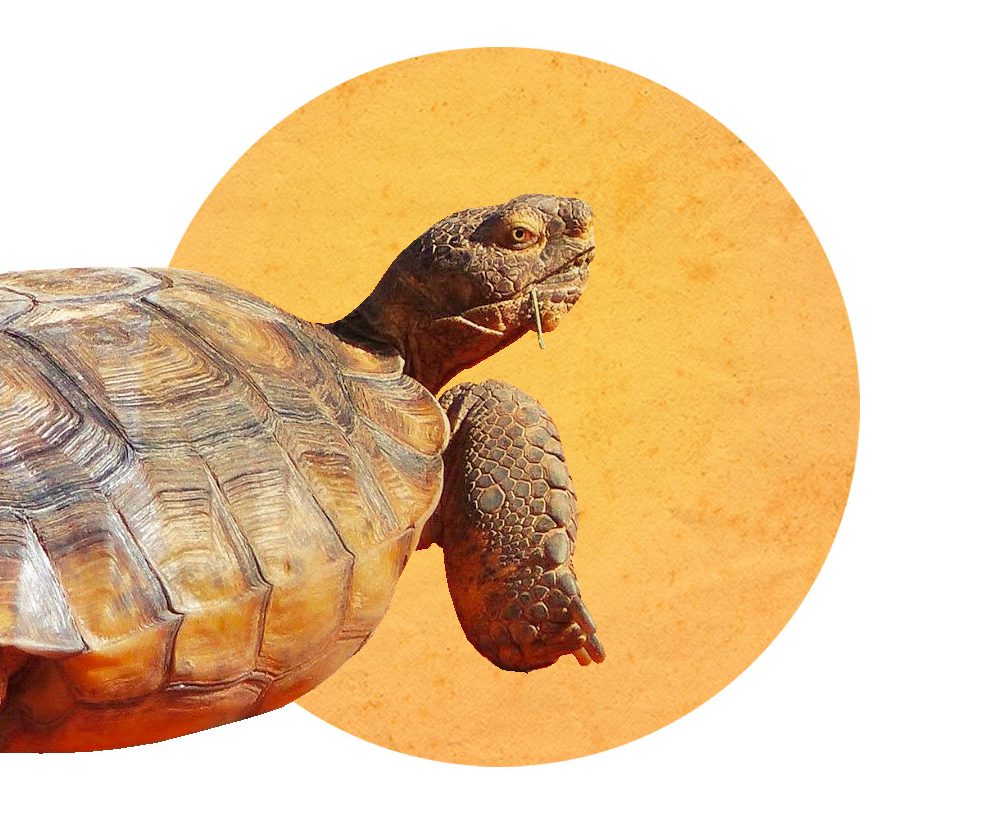Some information may be outdated.
For a few years, the Utah Division of Wildlife Resources has been running a desert tortoise adoption program. Not a symbolic adoption: literally caring for a living tortoise in your backyard.
The desert tortoise is a federally threatened species, and each year, the department comes into possession of tortoises that cannot be released back into the wild: tortoises that were injured or illegally captured and brought up in captivity.
The department brings the tortoises to the Great Basin Serpentarium in Lindon, which cares for the animals while finding them permanent homes—since desert tortoises are protected under the Endangered Species Act, they can’t be transported out of the state. Those permanent homes, then, are with Utah citizens.
Right now, there are 17 tortoises up for adoption.
“The tortoises are quite amazing little animals,” said Joey Mugleston, who runs the desert tortoise adoption program. “They each have their own little personality—some of them get really used to seeing you, and so when you come out with your tray of veggies for them they’ll come up to you.”
Typically, the program handles 6 to 10 tortoises per year, Mugleston said, but throughout the pandemic, adoption slowed—now there’s a backlog. Most tortoises get adopted in Salt Lake County, likely because there are more people in that county, Mugleston said, but tortoises can be adopted statewide, and they adapt well to whatever climate they’re put in.
“You become the main caretaker for this tortoise, either for its entire life or your entire life,” he said. Tortoises can live for over 50 years, and the program has dealt with situations where the tortoise has outlived its caretaker.
There are a number of requirements to be a tortoise caretaker. Tortoises require large, fenced yards that are at least 150 square feet, and yards must be escape-proof and relatively flat—tortoises are curious creatures that attempt to climb over things that get in their way, and in doing so, may tip over onto their backs, which can be fatal.
“You may be surprised by the trouble a tortoise can get into,” the UDWR’s desert tortoise adoption booklet says.
They need access to burrows, to hide from the heat and bad weather; sunlight, to promote good shell growth; and water: water should be provided in a large, shallow dish that the tortoise can climb in and out of. Backyards in Moab could provide a great climate for the tortoises, Mugleston said, as long as there’s somewhere the tortoises can find shade.
They need a varied diet too: they require a diet rich in leafy greens like dandelions and clover, and can be fed vegetables such as beans or zucchini.
For half the year, tortoises live inside: they hibernate from October/November to March/April and have to be kept in a plastic storage bin at temperatures between 50º and 60º.
Potential caretakers will first submit an application, and if approved, Mugleston and his team will conduct an onsite review of the tortoise’s new home to double-check the tortoise will have everything it needs. Then, the tortoise can be adopted.
The biggest threat to the desert tortoise in the wild is loss of habitat, Mugleston said.
“We’re encroaching on their habitat,” he said. “The more homes we build, the more we block off their ability to move back and forth. We bring with us dogs and cats, animals that can be a predator for the tortoises. We are one of the biggest threats there is … we’re putting homes right where the tortoises live.”
“If you want to help out one of our native species,” he said, “we have a lot of tortoises looking for adoptive homes.”
Interested caretakers can learn more in the UDWR’s Desert Tortoise Adoption booklet (www.wildlife.utah.gov/pdf/desert-tortoise-adoption.pdf) and submit an application at www.greatbasinserpentarium.com/desert-tortoise. Mugleston encouraged anyone with questions to contact him via the website also.
Editor’s note: Any home in Moab that successfully adopts a tortoise, let us know and we’ll definitely write about it!
Appreciate the coverage? Help keep local news alive.
Chip in to support the Moab Sun News.





